I felt compelled, after last time, to try playing the PC-88 version of the game all the way through. I come bearing screenshots and also curious differences between the two games.
The compellation came because of a conversation I had with Leigh Alexander, who made a video on Rungistan as part of her Lo-Fi Let’s Play series. She wrote the author, Bob Blauschild, and he wrote her back.
Bob wrote that he was wondering “why computer games were so expensive” so tried out Wizard and the Princess, and ended up going through all the graphic adventure games at the time. He ran out of options so wanted to make his own, so with Raiders of the Lost Ark in mind, he came up with using “action sequences and moments of possible panic”.
He also sheepishly explains the graphics were based on technical limitations at the time. The fascinating thing about the Japanese versions (all made in 1986) is that they do not have the same limitations, but they went with black and white anyway as a style. I realized I wanted to see what it looked like all the way through. This is the remake Bob never asked for but got anyway.
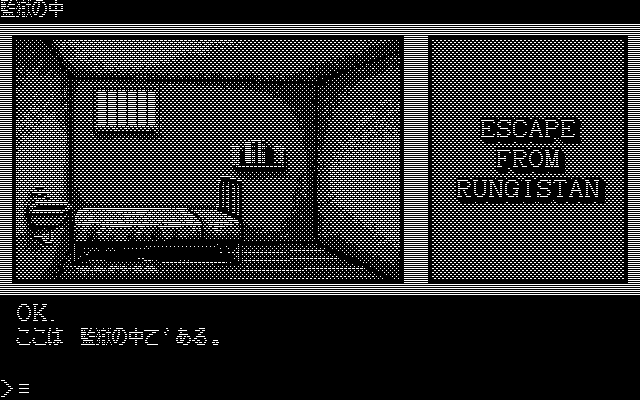
The parser commands are roughly the same as the Apple II game, but the distance between exactly and roughly can cause massive headaches. Right at the start, you still need to call the guard asking for food. In the original I could go
CALL GUARD
SAY FOOD
and it worked just fine. In this version, you need to type
CALL GUARD
WANT FOOD
which was enough to throw me off for a long time. The encounter with the child is still the same…
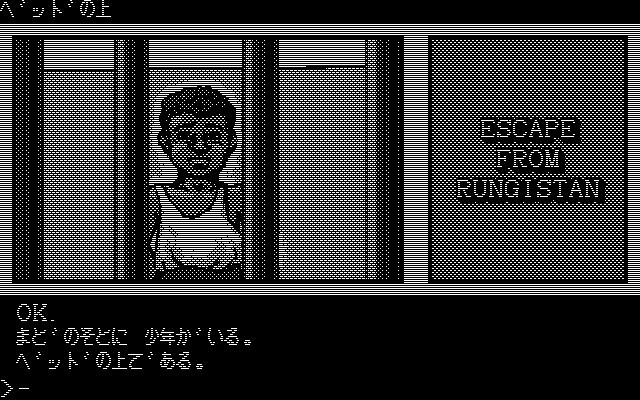
…but to dig a hole, rather than DIG WALL / WITH SHOVEL you simply can just DIG WALL.

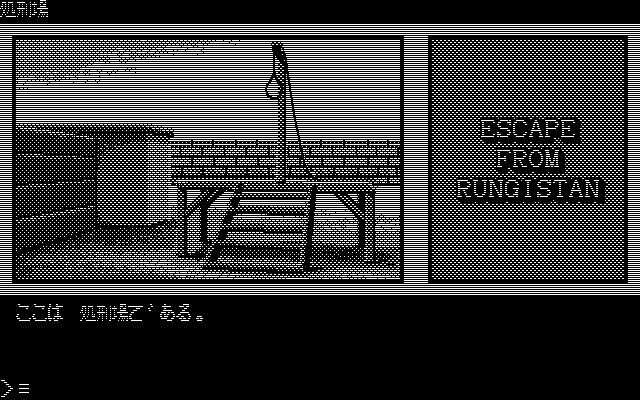
The layout is slightly different here. Rather than spotting the snake before doing the jump over the ridge, you do the RUN and JUMP first, and there’s no “approaching ridge” timing puzzle where you have to type JUMP before the oncoming line gets too close. I can see why the bitmap style doesn’t make the moment work any more.

The snake then can appear anywhere in the desert, including at the knife. Rather than a “slither” motion the snake sprite just slides right to left.
The bear is functionally identical, although it certainly looks rather different.

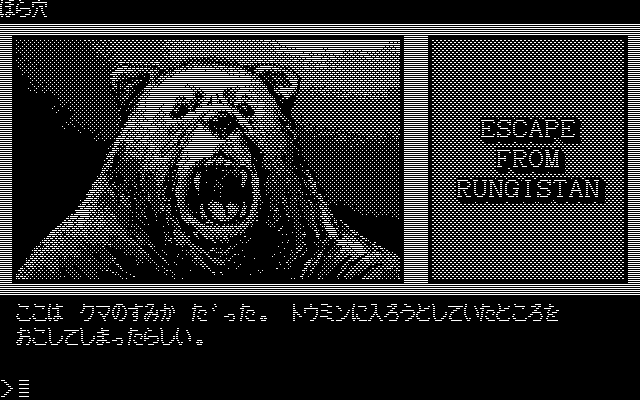
The skiing segment is in, but rather than a “oncoming 3d” look, you are controlling your skier+ from above. It is notably easier here than it is in the Apple II version. (On the M88 emulator, for anyone trying it, control is with the number pad rather than regular arrow keys.)
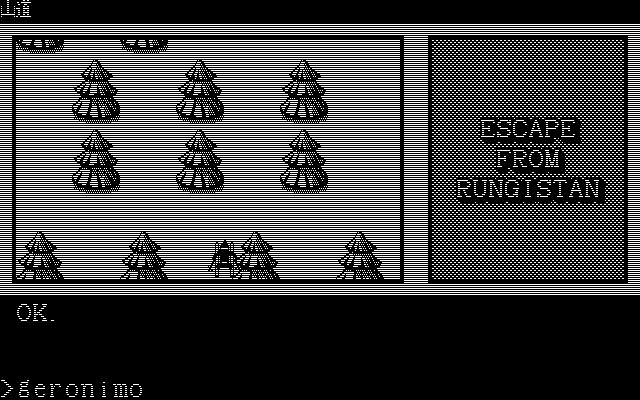
This is followed with more or less the same area with the saloon as before, including trees you have to look at closely. The dynamite event doesn’t have the visible fuse moving, but you still need to pour water; rather than the egg dropping from above dropped by a flying bird, you catch it from a tree.

The code with the fragments used to open the lock is done exactly the same, including the parser syntax.

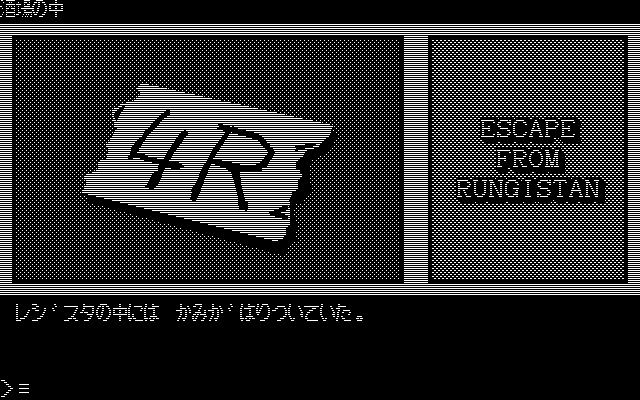
The raft puzzle took me a little while. You’re supposed to GET DOOR from outside the saloon first (not DOORS, DOOR) and then MAKE RAFT and finally RIDE RAFT while at the river (you can’t make the raft early, and USE doesn’t work like it does in the Apple II version).
The farmer puzzle is the same, the planes still fly overhead (as sprites now), and the cat still has a magnifying glass.
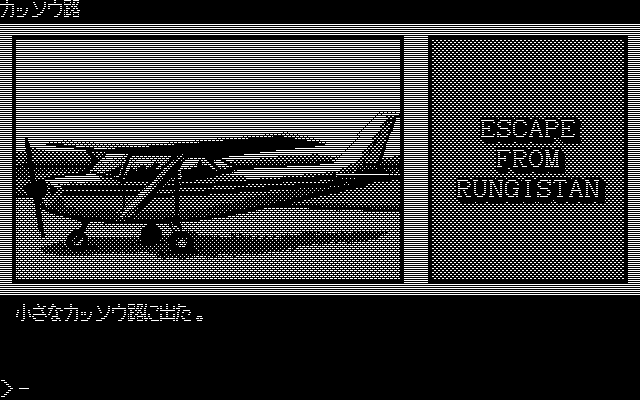
The almanac’s description, instead of randomly mentions it includes eclipses, specifically states there will be a solar eclipse today. Unfortunately I had trouble figuring out a syntax; PREDICT ECLIPSE no longer works. TEACH ECLIPSE does, though.
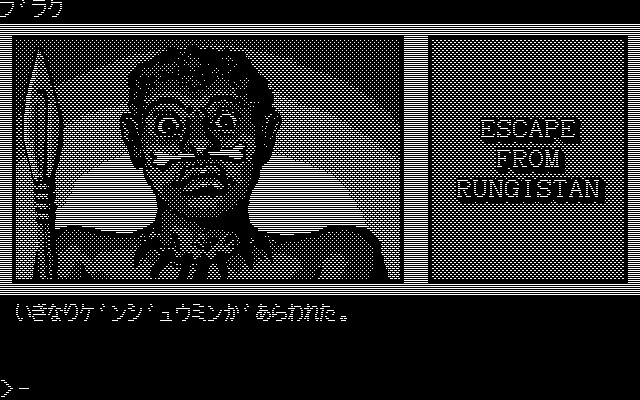
The gas station and house with the mailbox are the same. It’s a little easier to tell the writing is writing.

The plane puzzle works the same, except you need to FILL TANK while outside the airplane first as opposed to inside the plane (fair).
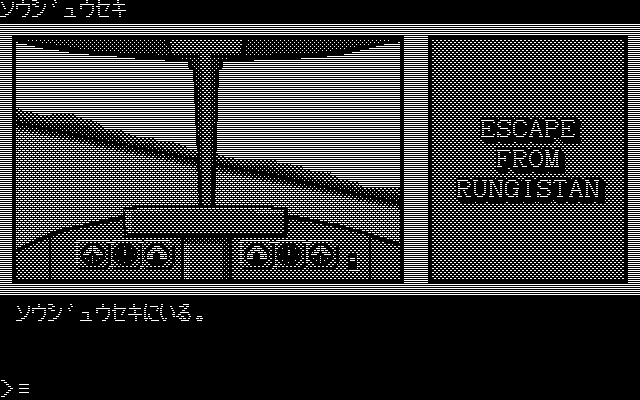
The dynamite puzzle is in; the sign that tries to misdirect you the wrong direction is not. The booze you hand over as normal, to reach victory.
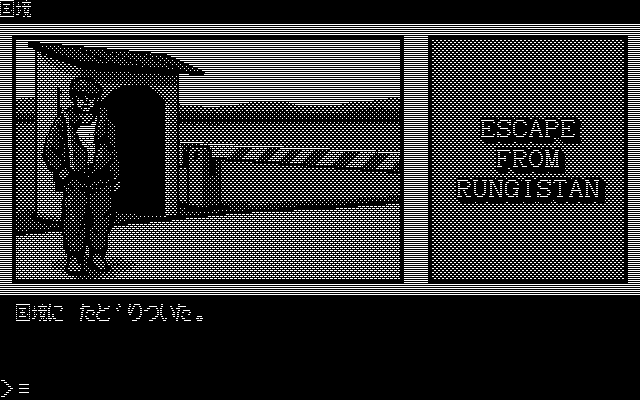
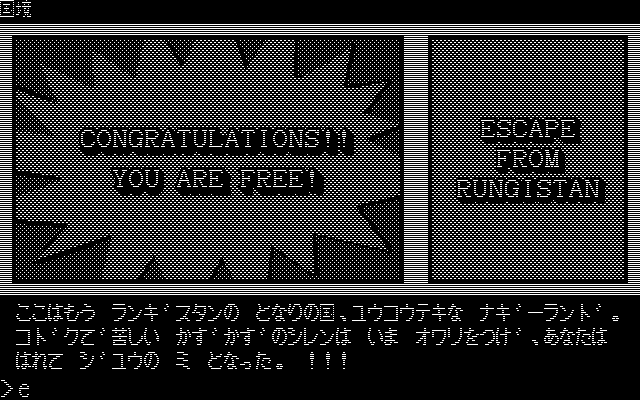
While the graphics are certainly slicker-looking the loss of animation does seem to be a bit much. In retrospect, I’m not sure if all the animations would replicate in any other style; the fuse “snaking back” on the dynamite really is only effective with an absolutely clear wavy line erasing dot by dot. The snake, additionally, needs to be both simple and easy to predict to get across its full original effect.
I still salute the effort put into this, and if you (the one reading this) are really stuck on the skiing portion of the original game, maybe you should try this version instead. Just remember to GET SKI, not GET SKIS while in the cabin even though you’re picking up a pair. (?? I assume this is because of something in Japanese, can anyone explain?)
(The skiing you can see in the video above animated up to a crash; the video stops there with a loud beep.)
so you actually chatted with Leigh? Was she familiar with your blog? Any other insights from her? And more importantly, will she ever consider restarting her lo-fi let’s play series?
interesting that the descriptions are in Japanese and yet you enter English parser commands.
She had not read this blog before, although she might read this comment, so I’ll leave those questions if she wants to chime in.
It is not at all uncommon for Japanese adventure games to have English commands if it’s parser rather than menu. Parsing Japanese is rough. SystemSoft did some Infocom ports with a “real” Japanese parser but they only appeared in the 90s. This is part of the reason Japan in general switched to menus so quickly.
Japanese doesn’t usually differentiate singular and plural with objects, so “ski” and “skis” are the same, just like “sword” and “swords”, etc.
Great to see you cover this! I’ve been fascinated with Starcraft for many years, and I think this was one of their nicer ports/adaptations, just like Shōmakyō no Densetsu and Las Vegas. These kind of came at the tail end of the Japanese boom for traditional Apple II style text/graphic adventures that had started a few years before, as menu-driven games like Hokuto no Ken and Asteka II were taking over that part of the market, and the Famicom boom (which these menu driven adventures were perfectly suited to) was really exploding.
Thank you for continuing on to the remake! I love the classic pixel art, even if the animation was left out. What is it about that bear that makes it clear the art is Japanese rather than Western?